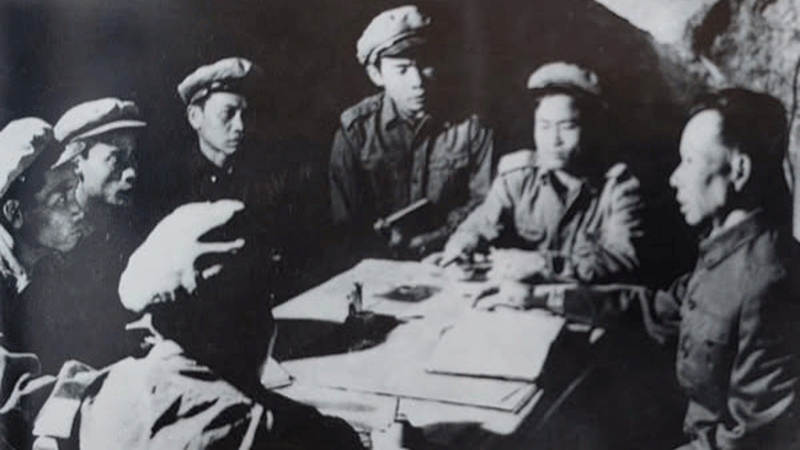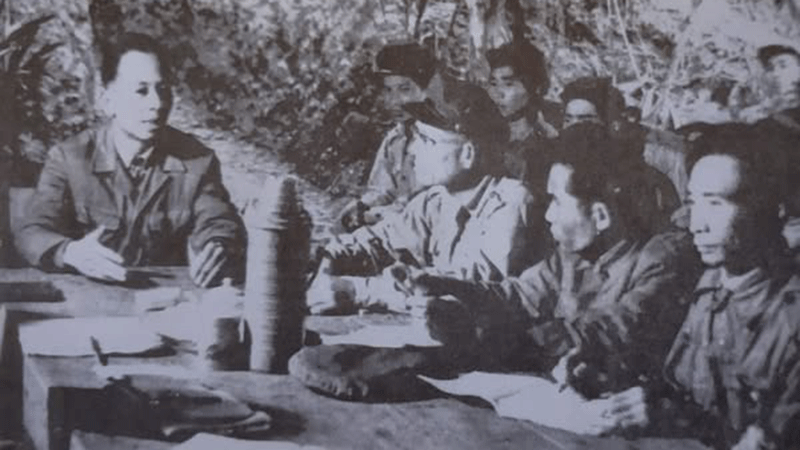Biography of Comrade General Khamtay Siphandone
Comrade General Khamtay Siphandone was born on February 8, 1924, in Huakhongphayai village, Khong district, Sithandone province (now Champassak province). He and his six siblings were members of a middle-class farming family, whose parents were Mr Ny Nilaxay and Mrs Saybua Nilaxay.
At the age of 7, he came to Vientiane with his grandfather Mahakeo and attended primary school, then took the entrance exam to PAVIE College, the only secondary school in Laos at that time.
- At the end of 1941, President Khamtay Siphandone left school and took the entrance exam to work in the postal sector, then went to study for 2 years in Saigon (South Vietnam, now Ho Chi Minh City).
- In 1944, President Khamtay Siphandone was appointed as a messenger and stationed in Phongsaly province.
- In 1946, President Khamtay Siphandone went to work as a postmaster in Pakxe district, Champassak province.
- In 1947-1948, he was a military officer in the southern region headquarters on the Lao-Thai border.
- In 1948-1950, he was the representative of the Lao Issara movement (Lao Free Movement) in the southern region and was responsible for establishing revolutionary bases in the southern region.
- In 1950-1952, he was a member of the Central Committee of the Neo Lao Issara (Lao Free Front).
- In 1952-1955, he was the chairman of the regional committee, also in charge of military affairs in the central region.
- In 1953, he became a member of the Indochina Communist Party.
- In 1955-1956, he took a position with the Lao army.
- In 1957-1959, he was a member of the Party’s Central Committee and head of the Central Party Office.
- 1959-1960 Member of the Party’s Central Committee, responsible for propaganda and training in the broadcasting division of the Party’s Central Committee (Lao side).
 |
 |
- 1960-1961 Member of the Party’s Central Committee, responsible for military affairs, and supreme commander of the Lao Army.
- 1972 The 2nd Party Congress elected him as a member of the Politburo of the Party’s Central Committee and Supreme Commander of the Lao People's Liberation Army.
- 1975 After seizing power nationwide, he was appointed Vice Chairman of the Council of Ministers, Minister of National Defence, and Supreme Commander of the Lao People's Liberation Army.
- 1982-1986 The 3rd National Party Congress elected him as a member of the Politburo of the Party’s Central Committee, Secretary of the Party’s Central Committee, Minister of National Defence, and Supreme Commander of the Lao People's Army.
- 1986-1991 The 4th National Party Congress re-elected him as a member of the Politburo of the Party’s Central Committee, Secretary of the Party’s Central Committee, Minister of National Defence, and Supreme Commander of the Lao People's Army.
- 1991 The 5th National Party Congress re-elected him as a member of the Politburo of the Party’s Central Committee, Minister of National Defence, and Supreme Commander of the Lao People's Army. He was also appointed as a Deputy Prime Minister.
- On August 15, 1991, the 6th session of the 2nd Supreme People's Assembly appointed him as Prime Minister of the Lao PDR.
- On November 24, 1992, a Special Plenary Session of the Party’s Central Committee (5th term) elected him as Chairman of the Party’s Central Committee and also Prime Minister.
- 1996 The 6th National Party Congress elected him as Chairman of the Party’s Central Committee.
- In 1998, he was elected President of the Lao PDR.
- In 2001-2006, the 7th National Party Congress re-elected him as Chairman of the Party’s Central Committee and President of the Lao PDR.
- In 2006, due to his advanced age, he requested retirement from the Party.
Comrade General Khamtay Siphandone was a revolutionary with outstanding qualities who served the Party with unwavering dedication. Throughout his adult life, he made great contributions and was hugely influential in spearheading the revolutionary cause of the Party and people.
Comrade General Khamtay Siphandone was a strategist with a broad political and military vision, able to assess and predict changes and take the lead in responding to them.
He became the closest and most intimate comrade of President Kaysone Phomvihane and worked side by side with other Party and State leaders in studying and determining the correct revolutionary guidelines, policies, strategies and tactics, in accordance with developments during each phase of the Lao revolution.
Comrade General Khamtay Siphandone was one of our Party’s great leaders who proudly carried the banner of unity and solidarity within the Party and all revolutionary ranks.
He symbolised the unity of the Lao people and the nation, respected and strictly implemented the principles of the Party's organisation and activities, and was imbued with a generous spirit towards his comrades and the masses.
He resolutely opposed all individuals and events that violated the principles and discipline required to safeguard the Party's integrity and encouraged his comrades to demonstrate exemplary behaviour and practices. This earned him the respect and trust of the organisation and his comrades throughout all his terms of office.
In recognition of the many virtuous deeds performed by Comrade General Khamtay Siphandone, the Party and the State have honoured him with various orders and medals, namely:
1. 2 National Gold Medals.
2. 1 Medal of Merit, First Class.
3. 1 Medal of Revolutionary Victory, First Class.
4. 1 Anti-French Medal.
5. 1 Anti-American Medal.
6. 70th Party Anniversary Commemorative Medal.
In addition, he received the Gold Star, as well as medals of appreciation from a number of friendly countries.
By Times Reporters
(Latest Update April 3, 2025)
|




